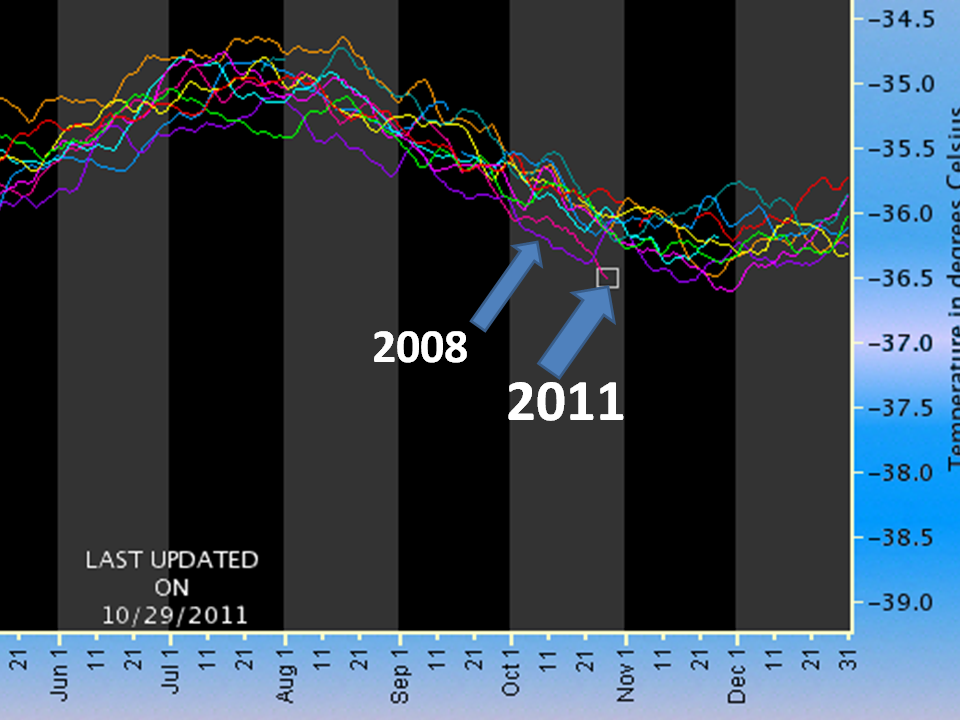For those tracking the daily global temperature updates at the Discover website, you might have noticed the continuing drop this month in global temperatures. The mid-tropospheric AMSU channels are showing even cooler temperatures than we had at this date with the last (2008) La Nina. The following screen shot is for AMSU channel 6 (click for large version).

A check of the lower stratospheric channels (9, 10) suggests this is not a stratospheric effect bleeding over into the tropospheric channels.
With the current (and forecast to continue) stormy pattern over the U.S., I have to wonder whether the atmosphere is currently in a destabilized state. I doubt that surface temperatures anomalies are as anomalously low as the mid-troposphere temperatures are running, which in combination with anomalously cold mid- and upper-tropospheric temperatures means there is extra energy available for storms. (Since AMSR-E failed in early October, our sea surface temperature plot is no longer showing current data, so I have no easy way to check surface temperatures.)
Of course, this too shall pass. I just thought it was an interesting curiosity during a time when some pundits are claiming global warming is “accelerating”. Apparently, they are still stuck in the last millennium.

 Home/Blog
Home/Blog



